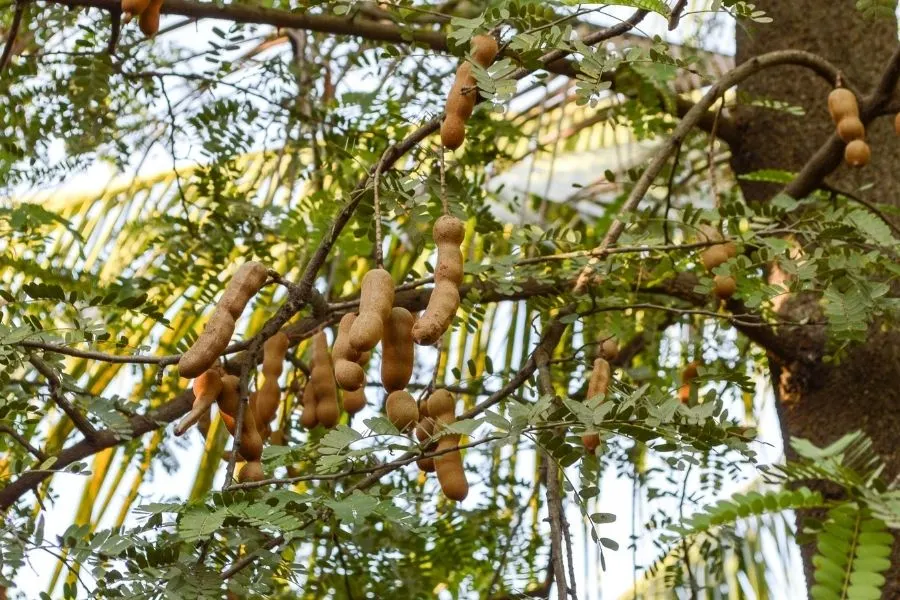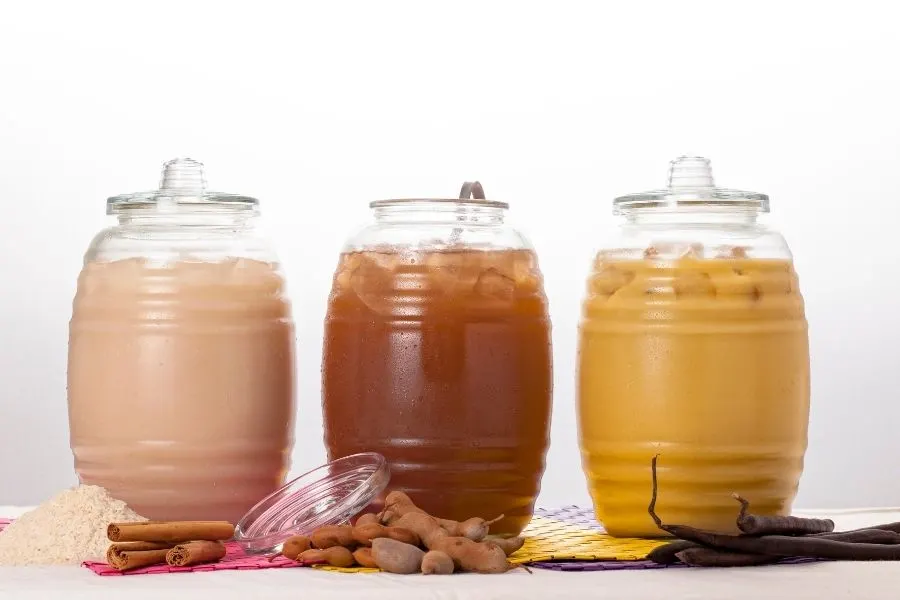Tamarind is a unique tropical fruit with various uses. From cuisine to household use, tamarind has been a staple in African, Indian, and Pakistani cooking for hundreds of years.
The Tamarindus Indica tree produces pods with a sweet and/or sour flesh. Botanically speaking, there are many different varieties and we’re going to explain them today.

What are the different tamarind varieties?
The most favored tamarind varieties include Sweet Tamarind, Manila Tamarind, Spanish Tamarind, Velvet Tamarind and Australian Tamarind. When it comes to flavor, there are two varieties commonly referenced.
The first is a sweet variety sold fresh to consumers. The second is a sour variety used for tamarind paste and other food/ beverage products derived from the fruit. With a gummy texture, tamarind packs a powerful burst of flavor into each bite, making it a world-famous fruit celebrated for its golden flavors.
Grown primarily in India and other tropical/ lush landscapes, tamarind is not only low maintenance, but easy to grow. First and foremost, tamarind trees can take between 6 and 8 years to fruit. The tree is capable of massive growth, boasting a height of 82 feet. Not to mention, tamarind trees can live as long as 300 years.
Read also: Tamarind Paste VS Tamarind Concentrate
No wonder why this sweet and sour fruit has been a staple for centuries! The fruits produced from the mother tree are actually classified as legumes. The pods span between 4 and 6 inches. Tamarind’s exterior color is brown, while the inside is a yellow-orange.
The seeds take up a significant portion of the pod, making up approximately 34% of the entire legume. Interestingly, tamarind contains up to 10% tartaric acid. However, this is not unusual as other fruits such as grapes, cherries, apples and pineapples all have varying tartaric acid levels.
How does tamarind grow ?
To begin growing tamarind, the seeds must first be soaked in warm water for 12 hours. Once the seeds have fully soaked for 12 hours, the process of planting or “sowing” begins. You need high quality soil to make sure the tree grows properly.
Tamarind prefers a gritty, clay-like soil, similar to a saline soil. The seeds must be sowed approximately 1/2 inch deep. After a week, the seeds should have completed the germination phase.
Please note that the Tamarindus Indica tree takes several years to develop. In this scenario, the best option is to select a tamarind plant from your local nursery. The planting process is important and will determine your tree’s size and quality for many years to come.
A hole should be dug into the ground with a circumference twice that of your tamarind plant’s roots. Before placing the young plant into the ground, simply trim off any damaged or dead roots. Once the roots are placed in the ground, cover with high-quality soil and water generously.
To successfully grow a tamarind tree, the climate should be dry and tropical/ subtropical. Since the young plants can not survive or endure cold weather, temperatures must never drop below 50 Fahrenheit.

The adult plants are more resilient to dropping temperatures and can withstand 28 Fahrenheit (maximum). When the weather is clear, dry and sunny, tamarind trees thrive. Full sun is needed for bountiful production.
While tropical climates are necessary in an outdoor setting, tamarind trees can thrive in a greenhouse or when grown indoors.
How to use tamarind
When the fruit is young and in development, it is green and sour. During the ripening process, it becomes a sweet-sour combination. Locals will use the fruit at all different stages to make certain dishes or food/ beverage products.

The pulp is often added to South Asian, Middle Eastern and Mediterranean cooking, even Mexican cooking thanks to its bold flavor. The uses include chutneys, desserts, sauces and more. In fact, tamarind is responsible for the deep, intense flavor in South Asian rice and curries. It has been used as a pickling agent.
Unripe tamarind can neutralize the toxins in Ghana yams, making them safe to eat again. Once fully ripened, the flavor is sweet and savory. In fact, depending on the specific variety, some fully ripened tamarind pods have 0% acidity.
However, this fruit extends far beyond the kitchen. Tamarind is used for cleaning/ polishing metal. Thanks to its tartaric acid content referenced earlier, tamarind is ideal for removing tarnish from metals such as bronze and copper.
One of the most noticeable differences between Asian varieties and African varieties is the pod size (length). In Asia, tamarind pods have anywhere from 6 to 12 seeds. In Africa, pods have anywhere from 1 to 6 seeds.
Due to the tree’s massive size and height, an annual harvest can yield 386 pounds of fruit. The fruit can be grown in tropical environments worldwide, including Florida, Malaysia, Madagascar, the Philippines and Sri Lanka. Tamarind is called “Asam” in Southeast Asia. The tree serves as food security and sustainable development of rural areas in countries with high production.
Read Also: Pomelo Varieties
Pure tamarind options
Once harvested, the next step is to process the pods. Using the freshest tamarind possible is best for flavor. The options for pure tamarind include…
Raw Pods:
Raw pods are unprocessed and at peak freshness. This allows the shell to be easily opened and fruit pulp consumed.
Pressed:
When the pulp is pressed into a block, the outer shell and seeds are removed. The 100% pulp is then condensed into a single block. If you do not have access to fresh, raw pods, the next best option is pressed tamarind.
Boiled:
Boiled tamarind is a concentrated form of the pulp which has been cooked to increase shelf life. The concentrated tamarind may also contain preservatives for freshness. It is best to read labels and ensure your tamarind is as natural as possible.
In addition to these 3 pure forms, tamarind can be found in many sweets, candies and snacks.

